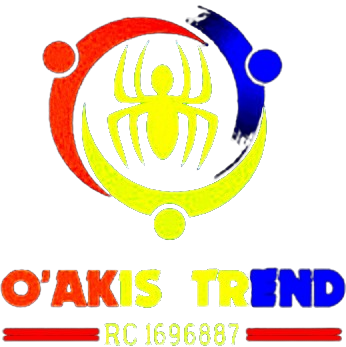If you’ve ever looked at the booming demand for African foods in Europe and thought, “I can supply that”, you’re not alone. From London to Amsterdam, the shelves of African and Afro-Caribbean stores are stocked with Nigerian staples — garri, palm oil, dried fish, ginger, ogbono, and more. Yet, most are imported in small quantities, leaving room for serious exporters to take charge of this profitable market.
In this article, we’ll break down everything you need to know about exporting food and agro-allied products from Nigeria to Europe — from registration to documentation, compliance, and logistics — in plain, actionable language.
Understanding European Market Demand for Nigerian Agro Products
Europe’s African food market is growing rapidly. According to Statista (2024), African food imports into the UK and Netherlands have risen by over 20% in the last three years. The Nigerian diaspora is driving much of that demand, but so are health-conscious Europeans who now embrace organic, natural, and exotic products from Africa.
Some of the most sought-after Nigerian exports to Europe include:
- Sesame seed (used in tahini and snacks)
- Dried hibiscus flower (zobo) for tea and beverage companies
- Ginger and turmeric for natural health products
- Cocoa beans and cashew nuts
- Yam flour, cassava chips, and palm kernel oil
If you can source these products ethically and maintain export-grade quality, you already have a market waiting.
Registration Requirements with NEPC and NAFDAC
Before you can start exporting officially, your business must be recognized and approved by the Nigerian authorities. This helps prevent seizure, delays, and penalties at customs.
Here’s what you need:
1. Register Your Business with CAC
Your business must be legally registered with the Corporate Affairs Commission (CAC). It can be a Limited Liability Company or Business Name.
2. Obtain an Exporter’s Certificate from NEPC
The Nigerian Export Promotion Council (NEPC) issues this certificate after reviewing your business details. It is mandatory for all exporters. Registration can be done on the NEPC website.
3. Product Certification
Depending on your product type:
- NAFDAC (for processed or packaged food items)
- SON (for product quality and packaging standards)
- Ministry of Agriculture (for agricultural produce)
- Quarantine Service (for pest control and phytosanitary certificates)
Each agency ensures your products meet European Union (EU) import standards, especially around health, hygiene, and labeling.
Step-by-Step Process for Exporting Food Items
Once your documentation and registrations are complete, follow this structured process:
Step 1: Source and Prepare Quality Products
Only export grade-A, clean, and well-dried produce. For instance, sesame seeds should have less than 2% moisture content; hibiscus flowers must be free from pesticide residue.
Step 2: Package According to EU Standards
Europe is strict about labeling. Your packaging must include:
- Product name
- Country of origin (“Product of Nigeria”)
- Batch number and expiry date
- Nutritional information (for processed food)
- Exporter’s contact details
Invest in airtight, tamper-proof, and eco-friendly packaging. The Standard Organization of Nigeria (SON) provides packaging guidelines that meet EU and UK requirements.
Step 3: Secure a Buyer or Off-Taker
Use:
- NEPC’s Export Trade House in the UK or China
- LinkedIn B2B connections
- International trade fairs like Anuga (Germany) and Food Africa Expo
- Export marketplaces such as Alibaba or Tradekey
Once a buyer is secured, negotiate based on Incoterms (e.g., FOB Lagos or CIF Rotterdam).
Step 4: Complete Export Documentation
Key documents include:
- Proforma Invoice
- Packing List
- NEPC Export Certificate
- NXP Form (processed via your bank)
- Bill of Lading or Airway Bill
- Certificate of Origin
- Phytosanitary Certificate (for agro products)
- Insurance Certificate (where required)
Step 5: Shipping and Logistics
For large consignments, use sea freight through ports like Apapa or Tin Can Island. For smaller or perishable goods, air freight via MMIA (Lagos) is preferred.
Partner with licensed freight forwarders who understand export procedures and can manage customs clearance smoothly.
Common Mistakes Nigerian Exporters Make and How to Avoid Them
Many new exporters lose money not because of lack of market, but due to avoidable mistakes:
- Skipping Quality Control: Sending substandard or poorly packaged goods damages trust and leads to shipment rejection.
- Ignoring Compliance: Missing documents like the NXP form or phytosanitary certificate can result in port delays or confiscation.
- Working with Unverified Buyers: Always verify through chambers of commerce, trade missions, or NEPC export desks abroad.
- Underestimating Logistics Costs: Always include freight, handling, and insurance in your quotation.
- Neglecting Follow-Up: Export success comes from relationships. Keep communication open with your buyers and offer consistency.
Key Logistics Partners and Export Financing Options
If funding is an issue, institutions like:
- NEXIM Bank (Export Development Fund)
- Bank of Industry (BOI)
- Zenith Bank Export Finance
offer low-interest export loans.
For logistics, reliable partners include:
- DHL Global Forwarding (for air freight)
- MAERSK Line (for sea freight)
- Export by Sea Ltd, and
- Nigerian Ports Authority-approved clearing agents
Work with partners that understand NES fee payments, Form M approvals, and NCS clearance to avoid unnecessary bottlenecks.
Final Thoughts
Exporting food and agro-allied products from Nigeria to Europe is not just profitable — it’s transformational. With Europe’s appetite for authentic African products growing, the window is wide open for smart Nigerian exporters who combine compliance, quality, and persistence.
Remember, your first shipment may take time, but once your brand earns trust abroad, buyers will begin to seek you out — not the other way around.
Ready to export your first shipment? Contact us via WhatsApp on 08093865510 for expert guidance.
Let’s walk you through every stage — from NEPC registration to product packaging, documentation, and shipping.
